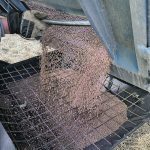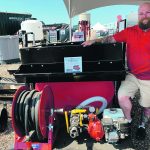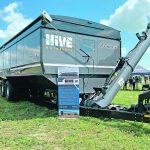Tag Archives Around The Farm

How to reduce grain handling and storage hazards

Changing the grain-handling game
How evolving demands around product quality, efficiencies and labour are influencing growers’ decisions on grain-handling systems
Western Canadian growers are rethinking their approaches to grain-handling systems, driven by the need to not only protect their harvests from damage during transport, but also to enhance overall productivity and sustainability on the farm. Industry experts say they’re witnessing an increasing number of growers who have come to the crossroads of their existing systems, […] Read more
Quick response for field fires

Farm consolidation drives big bin trend

Tools make sure those yields end up in the bin

Walkabout Mother Bins: a tale from the fields

Big mobile bins deliver big benefits
Mother bins ease harvest bottlenecks, saving weeks of time and reducing manpower and equipment requirements
Even among the other agricultural behemoths on display at Ag in Motion near Langham, Sask., mother bins stand out, dwarfing the super B trucks they’re designed to service. A mother bin is a grain tank on wheels, ranging in capacity from 4,000 to 8,250 bushels, depending on model and manufacturer. It is designed to address […] Read more
Screw piles an alternative to secure grain storage
Fast, secure and durable, the metal anchors can be used to augment traditional concrete foundations or stand on their own
Grain farming across the Prairies has evolved immensely since the turn of the new century. Every year there are more acres, bigger equipment and larger yields. The culmination of farm growth has also required more grain storage space and larger grain handling units, such as grain dryers. However, the bigger the grain storage or handling […] Read more
Biomass takes the heat out of the carbon tax
Manitoba company turns major farm expense into an asset by using alternative fuel sources for grain drying
With all the grumblings about the federal carbon levy’s effect on grain drying costs, a company that promises its technology can use a fuel source exempt from the tax should have customers lining up. “There are two sides to that,” said Triple Green chief executive officer Lyall Wiebe. “Obviously, there’s lots of interest, but there […] Read more





